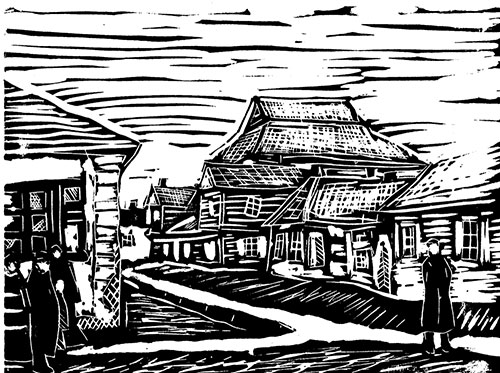Lost Treasures: The Wooden Synagogues of Eastern Europe The Artwork of Bill Farran
Pinsk, Belarus - Original Linocut
Pinsk, Belarus - Original Linocut
Yiddish name: Pinsk
Jews first settled in Pinsk in the 15th century.
During the years after the Partition of Poland (1795), Pinsk developed into an industrial city. Under Russian rule, policies were implemented to decrease the power and wealth of the Polish nobility. As the nobles lost their estates, the Jews lost their special privileges and were economically forced to move to larger towns and cities like Pinsk.
After the assassination of Czar Alexander II in 1881, thousands of shtetls were downgraded from market towns to villages where Jews were forbidden to reside. Thus, many Jews from the area resettled in Pinsk where thousands of Jewish workers found steady employment. By the beginning of World War I, Pinsk was a leading industrial and commercial center.
During World War II, Germany occupied Pinsk in July 1944. Most Jews were killed in late October 1942 during the liquidation of the Pinsk Ghetto by the German Ordnungspolizei and the Belarusian Auxiliary Police, with 10,000 murdered in one day.
Purchase a print
Original linocut prints are 8x10 inches, and are available either unmatted or in an 11x14 matte.
I also offer matted 5x7 digital prints. These prints are created from high-res digital images and come in an 8x10 matte.
